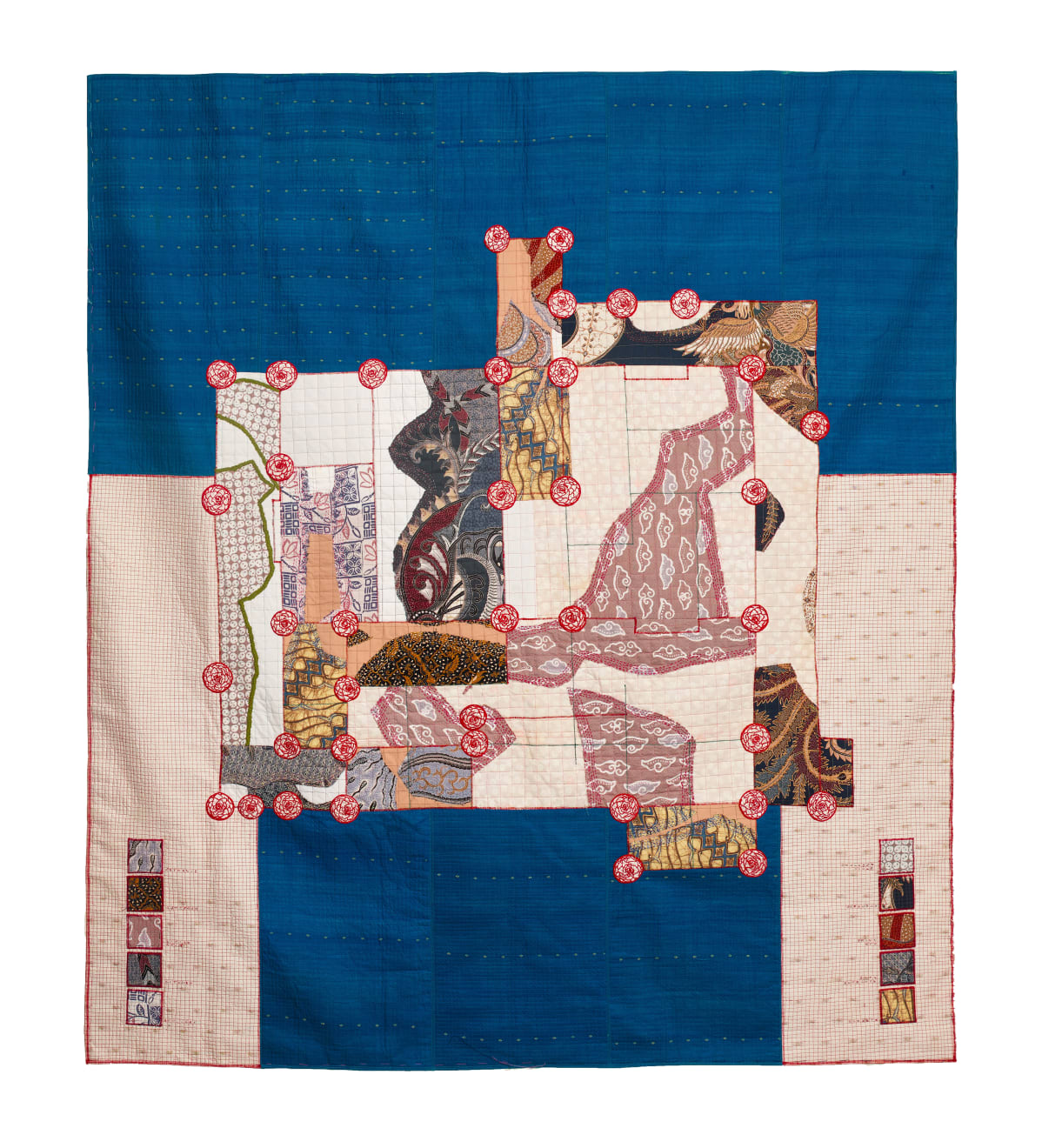-
Kallol Datta
Blueprint 01, 2025Reconstructed kimonos, saries, sarongs, kebayas and haori; silk, cotton, viscose, polyester, paper and thread78 x 69 in
198.1 x 175.3 cmThe Joseon period saw the aesthetics of Neo-Confucianism favour practicality, frugality, harmony and nature, forging a consistent architectural style throughout Korean society. Elements of architectural proportions in Korean homes were...The Joseon period saw the aesthetics of Neo-Confucianism favour practicality, frugality, harmony and nature, forging a consistent architectural style throughout Korean society. Elements of architectural proportions in Korean homes were moderate. Lower classes used white plaster walls set into rough wooden frames for their dwelling. Builders preferred materials like wood, stone, and paper. Koreans decorated their buildings with dancheong—brightly coloured patterns painted in bright green, blue, white, red, and yellow.
Following Confucian philosophy, men and women did not share living space in a hanok. Women in their inner rooms rarely ventured into outer courtyards. Sizes of these dwellings were varied by the status of their owners—aristocrats’ hanoks were ninety times larger than peasants’ chogas.
